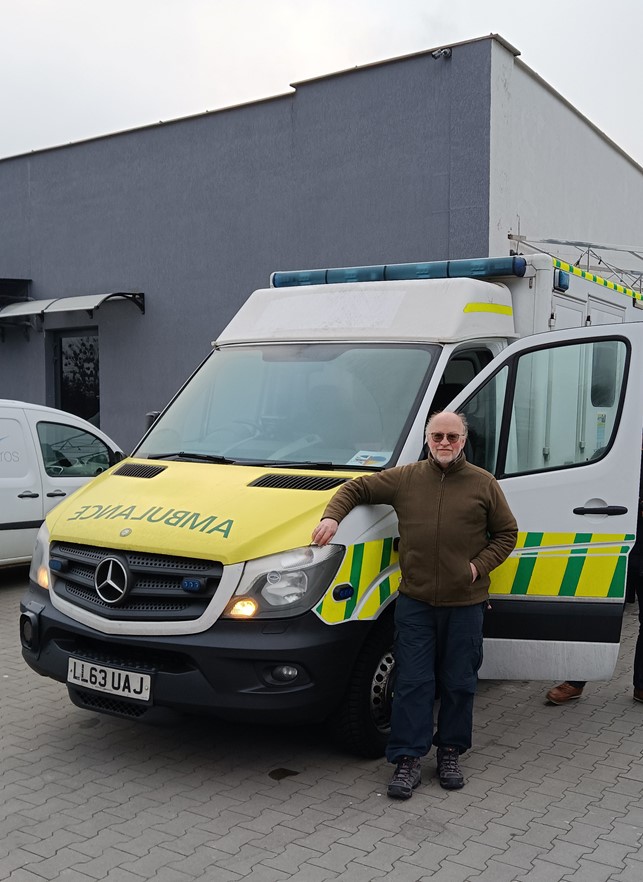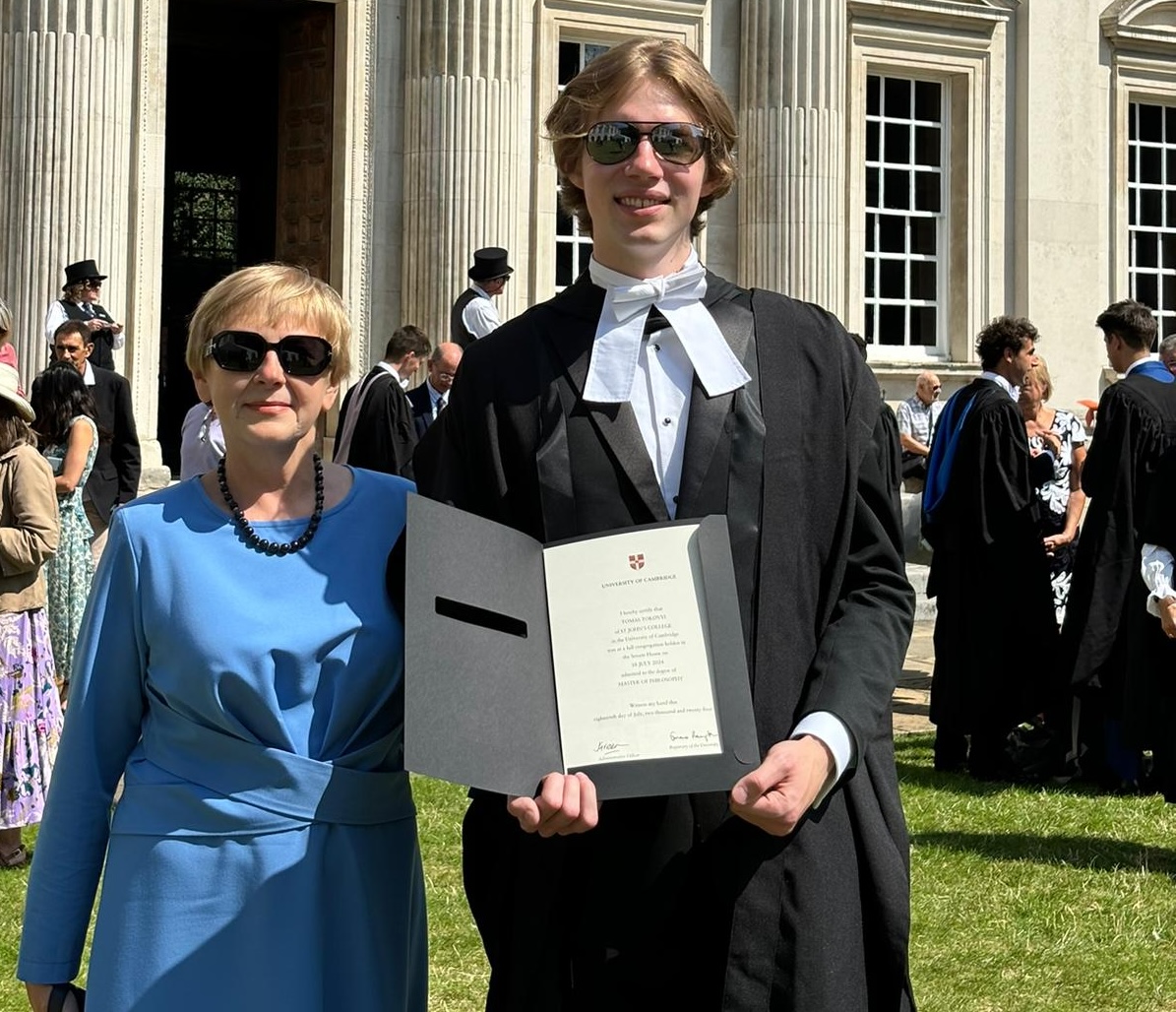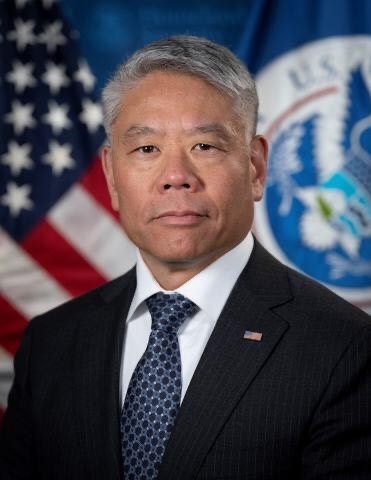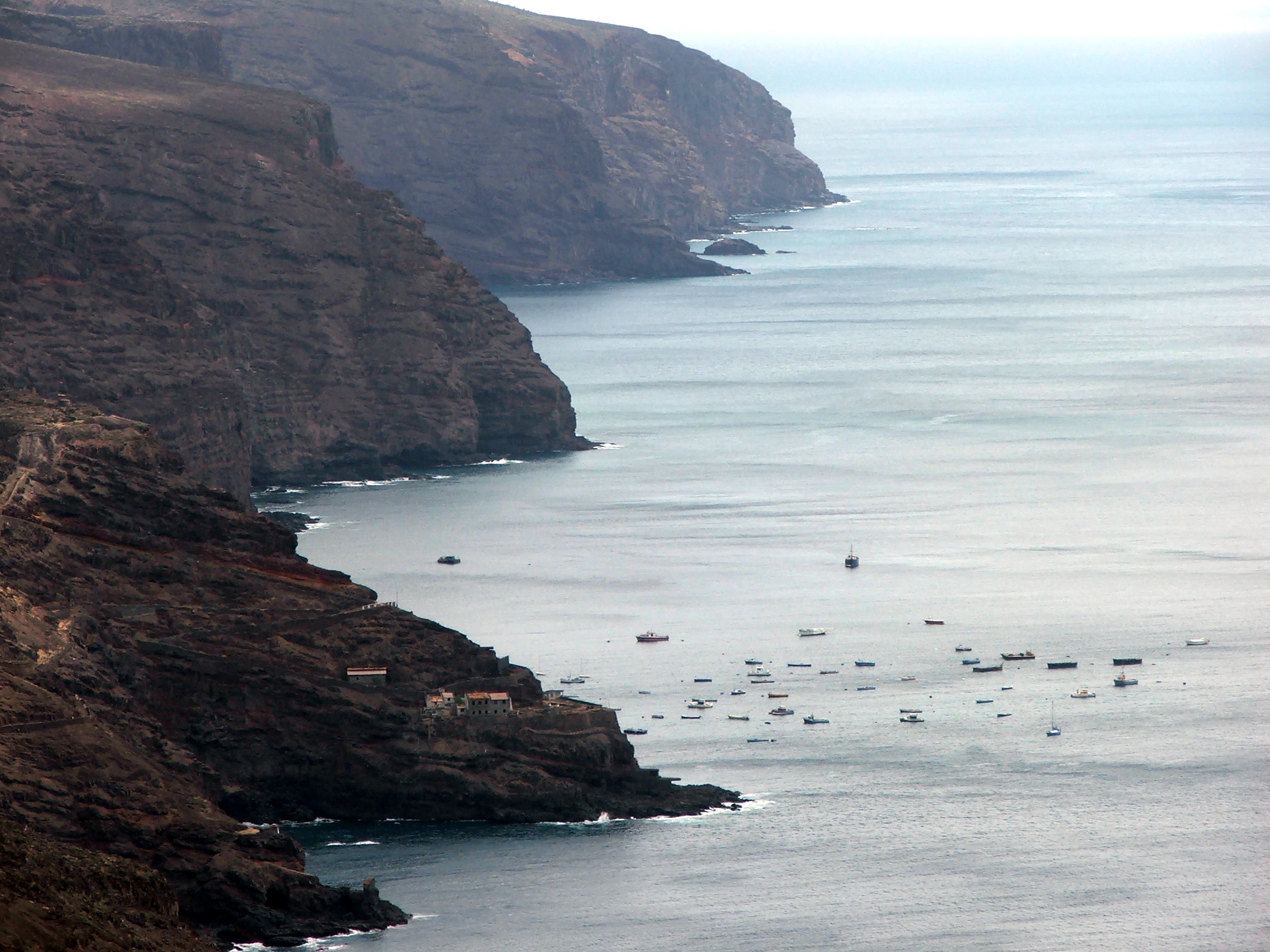by Richard Long (Literae Humaniores, 1975)
In early February this year, I drove an ambulance to Ukraine, in a convoy run by London-based charity Medical Life Lines Ukraine.
This organisation has delivered more than 90 ambulances since 2022. Vehicles retired from service in the UK are bought, usually at auction, reconditioned as fully-specced and functional ambulances, stocked with medical and other humanitarian aid, and then driven in convoys of four to eight vehicles by pairs of volunteer drivers. Each driver raises their own funds (normally £7-10,000) to buy, equip and deliver their half of their ambulance.
It was a moving experience, way beyond my normal life, a small contribution to an important initiative – but a contribution achieved only with massive support, from all the donors to my ambulance and the charity, from my fellow drivers, from the whole of the Medical Life Lines Ukraine team, and from the inspiring and brave people we met at the other end.
After arriving home, it’s true what I was told, that the reflections and feelings do not all hit you immediately, but sink in and bubble up more gradually.
I hope that writing this note will help crystallise some of that.
We set off from Wimbledon at 4.30am on the Sunday morning, crossed the Channel on Le Shuttle and drove across France, Germany and Poland before entering Ukraine. The drive there over four days was more or less uneventful, which is a good thing. Leaving the rain behind in Calais, the weather was extremely kind to us, cold but dry, so no ice and a fair bit of sun. Only the most minor mechanical traumas, efficiently fixed, and excellent convoy leadership, including the discipline of very early starts, got us to each daily destination in daylight for an early dinner. One fluttery moment when my big (and beloved) ambulance got down to literally a cupful of diesel in the tank, 1.3 miles worth, on the autobahn.
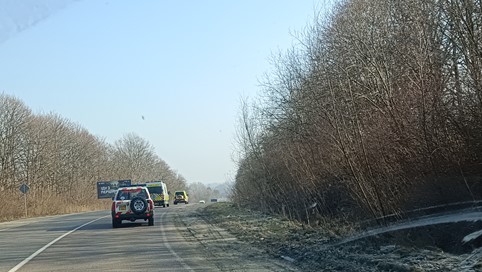
The driving required concentrated attention, not at all boring, with little need for playlists to pass the time, but not stressful either. The technique of convoy overtaking of trucks, while watching the tiny lights far behind rapidly evolving into a 160mph BMW, became quite satisfying as we got better at it, even balletic in a Top Gear kind of way. Each day getting to know the rest of the driver team better, an impressive, interesting, kind, humorous and dependable bunch.
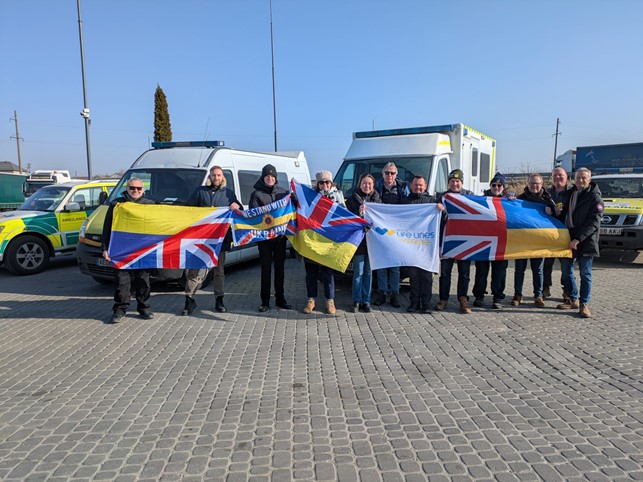
We arrived in Lviv in the early afternoon on the Wednesday and the next few hours were busy, as packages of supplies were unloaded and despatched, some to the post office, some into vans and cars. As well as medical gear, we handed over a van load of donated warm clothing to be taken to civilians, mostly bombed out of their homes along the front line, as well as some 400 Mars bars, both for the calorific content and a tiny morale boost.
The receivers of each vehicle arrived from all over the country to take possession. The mixed bag of ambulance types, including 4×4 SUVs and larger specialist patient transport vehicles, all fulfilled specific requests from different hospitals. One of the ambulances was being collected by a politician from a town in the war zone, because medical staff were too busy to come.
We joined up in the evening with our new friends for a deep exploration of Georgian cuisine, with many types of beverages, only some of which had been made professionally. An evening replete with affecting conversations, toasts and speeches.
The next morning, a few hours, too few hours, to see and feel a bit of Lviv.
Lviv, historical – a beautiful old city, a regional capital several times over in its 800 years as nation and empire borders ebbed and flowed across it, right up to times within living memory. Cathedrals, universities, concert halls, grand Ottoman architecture. We were given a fascinating guided tour of the centre, a survey of those 800 years of being Ruthenian, Galician, Polish, Ottoman, Polish again, Russian, Austrian, Ukrainian, Polish again, Soviet and then Ukrainian. The most striking story for me was the enforced population exchange in 1945-47 (agreed over the heads of the locals by the world’s great powers – sounds familiar?) to repatriate Ukrainians from Poland and Polish from Soviet Ukraine, so the population of Lviv changed by about 80% in that time. Needless to say, of the 200,000 Jewish residents of the city before the war, essentially none (maybe 800) remained by 1945.
Lviv, now – at first glance, a lively central European city, lots of traffic, many bars and restaurants, and a young crowd around. Air raid alerts do happen, because when a launch from Russia is detected it takes minutes or hours to work out where in the country is the target, but Lviv city itself has never (yet) been bombed, just as it also largely escaped violent attack by Germans and Russians in 1939-45.
Lviv, below the surface – a slightly ambiguous, discomfited sentiment within the people. They are living in a peaceful intact city, a long way from the day-by-day physical destruction, but it is happening in their country, and it is not just something they watch on the news. Perhaps there is a sense of guilt about being more OK than most of their fellow citizens.
Of those many young people, some are soldiers on a short leave, a lot of them are students because studies in other cities are not possible, some are younger than 25, so not yet of call-up age. Many families of Lviv have partners and children who are away, fighting. So they are all personally involved in the war in some way.
Among people on the street, walking around, maybe eating an ice cream, a significant number are in camouflage uniform – and then you notice how many of them have an empty sleeve or trouser leg. What happens in combat is they have quite good body armour, so chances of surviving a grenade or shell are improved, but there are a lot of amputees. Lviv is a place they come to for treatment. There are world-class innovative centres for advanced electronic prosthetics, not just the technology and manufacturing but also for the physical and mental rehabilitation.
Just off the central square is the Garrison Church of Saint Peter and Saint Paul, the official church of the Ukrainian Military and their families. Since the 19th century used for marriages, christenings, etc. by military personnel. Currently, mainly funerals. It’s a big church and one side aisle is full of photographs of the local war dead since 2014, the first illegal annexation of Crimea. Many, many soldiers, sailors, aircrew, of course, but also children and other civilians. When we went in, a service of commemoration was in progress. On even the shortest visit to Lviv, this church is a painfully poignant ‘must see’.
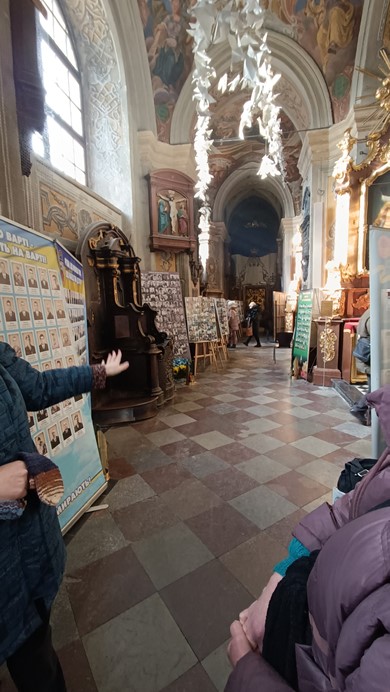
The convoy, one among the many achieved by Medical Life Lines Ukraine, was a worthwhile thing to do, even if just a glimmer in the darkness of the brutal, illegal war. I feel privileged to have had the opportunity to do it, and I could not have done it without the most generous support and good wishes of family, friends and their friends.
The need for these trips is not going to go away any time soon.
Even if the shooting stops, the ambulance fleet across the country needs rebuilding, as Russian drones have deliberately targeted ambulances transporting the wounded to hospital and in some areas they have destroyed a third of the fleets (and their paramedic crews). Convoys are scheduled for the rest of this year, including one in May, when another Old Member of the College, Mark Flewitt, whom many of you will know, will be driving, and I encourage you please to visit his fundraising page.
As they say over there, “Slava Ukraini!” (Glory to Ukraine) and, their usual toast, “Bud’mo!” (Let us be!).
